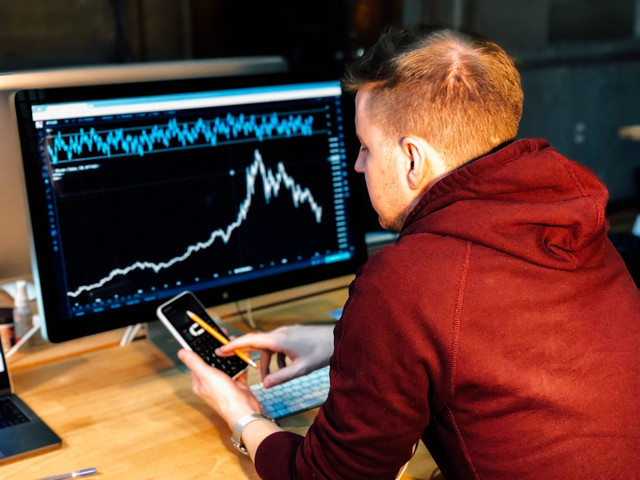Crypto coins are really popular these days. You can buy, earn, mine, and even win some cryptocurrencies. But the most common way to get some crypto is to purchase it through a reliable crypto exchange after the KYC procedure completion.
Although cryptocurrency is now available as never before, the majority of beginners lack the knowledge about how to build a well-balanced crypto portfolio. This is because they don’t know what factors of a crypto portfolio are the most important ones.
Actually, there are a lot of things to consider. In this review, we will focus on the basics of a good crypto portfolio. In the end, we will also provide some useful tips that will help to create a good portfolio that will bring financial gains. Let’s get down to business!
Introduction
Many beginners, who enter the crypto market, think that they just need to find a good cryptocurrency, invest their money in it, and wait until its price is higher. Building a DeFi portfolio is a more advanced approach. In a nutshell, you create a basket of various coins – from Bitcoin to Dogecoin – and hold these coins in your wallet for a certain period of time.
Why do you need to build entire portfolios if you can just guess one promising deal and benefit from it? Keep reading to find out why professional crypto investors prefer this approach.
Making Research Before Investing
Before putting your money in certain digital assets, you should conduct research and try to predict the benefits a coin might potentially bring to you. The value of a cryptocurrency increases if it has prospects to be adopted in different industries for different use cases. This feature is called utility. But how can you predict that the demand for a certain virtual currency will increase in the future?
During your research, you should study such aspects as the performance of the network, market cap, and supply of tokens. Strong networks tend to release promising coins. Also, consider a maximum token supply. Some coins don’t have a limited supply, which is bad for you because this feature doesn’t trigger scarcity, boosting the value of a coin.
After you’ve researched for a while and found some promising investment options, you can open an account on a crypto exchange. Make sure to work with reliable platforms. Once the decision is made, make your deposit in fiat currency and purchase the assets you consider promising. After the purchase, coins are transferred to a blockchain wallet.
The Notion of Diversification
Professional investors build crypto portfolios because they want to mitigate the risks through diversification. It means that the potential loss from one investment can be covered with the potential gain from another asset.
For example, you believe that the next Bitcoin run will be successful and that this performance will be better than any other altcoin. You want to invest $5,000 in cryptocurrency. You allocate 100% of the budget to Bitcoin. However, the market goes another way and Bitcoin goes on a 25% decline. You lose $1,250. This might be a big mistake not to expose yourself to a wider range of assets, and you can pay a big price for this mistake.
Diversification reduces the risk. Actually, diversification is one of the basic risk management practices every investor should follow. This isn’t as complicated. You just should research more coins and allocate your portfolio to several assets. For instance, you can consider building the following crypto portfolio:
- 20% in Bitcoin
- 20% in Ethereum
- 20% in Algorand
- 20% in Solana
- 20% in Cardano
Let’s consider what would happen to this portfolio in the circumstances from the following example. Bitcoin goes on a 25% decline, but 80% of your portfolio ends up in profit because altcoins show better performances. In this case, you invested in Bitcoin for only $1,000, meaning you will lose only $250, which is just 5% of your total investment.
This is just an example. It doesn’t mean that you should invest an equal amount in each project you choose. We recommend investing a higher sum in less-risky projects and a lower amount in high-risky ones. Try to find competing cryptocurrencies. In this case, the failure of one might cause the profitable performance of another. In any case, the more assets you add to your portfolio, the bigger the diversification level will be.
5 Tips from Us
We understand that everyone has different budgets, possibilities, interests, and levels of risk tolerance. Besides, the crypto market is extremely volatile, so everyone should do their own research and find the assets that correspond to their needs. Nevertheless, we have some ultimate recommendations that will be useful for all beginning cryptocurrency investors:
- Allocate a part of your total investment amount to market leaders. Market leaders are considered the top-10 coins by market capitalization. As of the date of writing, these are BTC, ETH, USDT, BNB, USDC, BUSD, XRP, DOGE, ADA, and Matic.
- Add cryptocurrencies with different use cases. The best way to diversify your crypto portfolio is to buy cryptocurrencies that are used for different purposes, such as gaming coins, DeFi utility tokens, metaverse tokens, privacy coins, and so on.
- Buy coins supplied by smart-contracts blockchain networks. Networks that are based on smart contracts tend to be the most popular in the industry. They can have different use cases and so might be very demanded among developers. Ethereum, Solana, Cardano, and BNB are the best blockchain networks based on smart contracts.
- Consider investing in cryptocurrency stocks. A crypto portfolio might include not only digital tokens. There are crypto-related companies that publicly list their shares. These assets can be great diversifying instruments for your crypto portfolio.
- Don’t ignore small projects. Some small coins might have a great potential to become real hits. If you can add such small coins to your crypto portfolio in their early stages, don’t neglect this opportunity.



